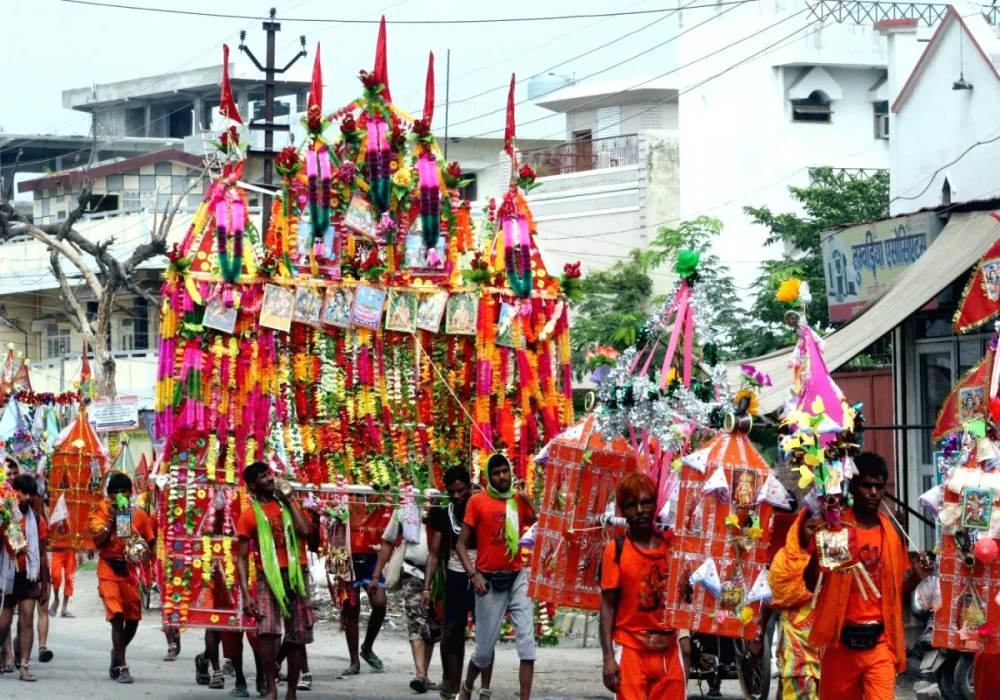
The Kawad Yatra (Kanwar Yatra) is not just a trip; it's a deep spiritual journey that brings together millions of devotees who worship Lord Shiva. This pilgrimage shows their strong belief, loyalty, and dedication to their religion. It also reminds us of India's rich cultural and spiritual history, where traditions and rituals are important in people's lives.
What is Kanwar Yatra (Kawad Yatra)?
Kawad Yatra is an important yearly journey for Lord Shiva's devotees in India. It's a pilgrimage where devotees called Kawadiyas travel to get holy water from the Ganges River. This journey usually happens in the Hindu month of Shravan (July-August).
Why Kawad Yatra?
The Kawad Yatra is a significant annual journey for Lord Shiva's followers in India. It's a pilgrimage where devotees, known as Kawadiyas, travel to collect holy water from the Ganges River. This journey usually takes place during the Hindu month of Shravan, which falls between July and August.
Religious Significance
Kawad Yatra is very important in Hinduism, especially for worshipping Lord Shiva. Lord Shiva is known as the destroyer in Hindu beliefs. This pilgrimage is a way for followers to show their respect and love for him. People see this journey as a way to ask for forgiveness for things they've done wrong before.
Pilgrimage Experience
During Kawad Yatra, people show deep devotion and follow strict rules. They walk barefoot carrying bamboo or metal poles called Kawads. These poles have containers at both ends to hold water from the Ganges. The journey tests their physical strength and strong belief in their faith.
The journey can be very long, covering hundreds of kilometers. Devotees often travel together in groups or join processions. They sing hymns and religious songs for Lord Shiva during the journey, making a spiritual atmosphere.
Routes of Kawad Yatra
The Kawad Yatra starts in many states in North India like Uttar Pradesh, Haryana, Rajasthan, and Delhi. People go to holy places such as Haridwar, Gaumukh (where the Ganges River begins in the Himalayas), and Sultanganj (where the Ganges flows in the plains). Many devotees follow these routes every year.


_500_x_350.webp)